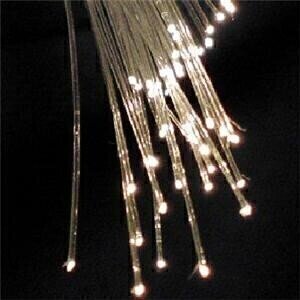News & Views
New Bright Light Source Can Speed Up Cancer Diagnosis
Mar 05 2015
Researchers at the University of Nottingham in collaboration with DTU (Technical University Denmark) have discovered a mid-infrared (MIR) light source that could lead to new types of cancer diagnosis, such as rapid skin screening and which could assist in surgery to remove diseased tissue.
Led by Professor Angela Seddon the Nottingham Mid-Infrared Photonics team based at the George Green Institute for Electromagnetics Research headed by Professor Trevor Benson, recently achieved a world record by producing the widest recorded intensity of light ever produced by a mid-infrared optical fibre. Published research* shows how this bright light rainbow beam, produced on a new portable laser, covers the widest range of infrared light wavelengths to date, provided more potential for molecular detection of cancer without the need for biopsy sampling. The light is the so-called mid-infrared supercontinuum.
Professor Seddon said: “In the UK, recent figures have shown that about four out of 10 patients are diagnosed with cancer in stages three or four. This late diagnosis impacts on treatment and five-year survival rates — meaning early detection is vital in order to increase survival rates.
“In our paper, we propose using MIR light for early cancer diagnosis using MIR medical imaging, sensing using endoscopy and also examining the skin. This form of cancer screening is called an ‘optical biopsy’ and is both non-invasive and cost-effective and could determine the existence of cancer at a time when remedial action can be taken.”
The development of this new technology,will also impact on many sectors including the stand-off detection of explosives, process-control in agriculture, the oil industry, manufacturing and improved monitoring of the environment and energy efficiency.
The special fibre chemistry, design and its processing method were conceived by Professor Seddon. Fibre fabrication was led in the laboratory by Senior Research Officer Dr David Furniss with Drs Nabil Abdel-Moneim and Zhuoqi Tang in the Mid-Infrared Photonics team using a specialist fibre drawing tower.
The Mid-Infrared Photonics team is currently engaged in the development of the first mid-infrared fibre narrow-band laser. The achievement of this will lead to compact modular mid-infrared photonic sources — both narrow-band and wide-band. Narrow-band sources will lead to new options for fibre laser medical surgery and coherent mid-infrared photonic imaging of tissue.
The Nottingham team has been awarded €1m from the EU to carry out this research within the €7m MINERVA Project — MId-to NEaR infrared spectroscopy for improVed medical diAgnostics. Partners in the research include NKT Photonics and Gooch and Housego (headquartered in England). The success to date may be attributed to the team approach to research and the ability to work across the boundaries between the disciplines of engineering, chemistry, physics and medicine within the academic and business sectors.
*Published in Nature Photonics:
Digital Edition
Lab Asia 31.2 April 2024
April 2024
In This Edition Chromatography Articles - Approaches to troubleshooting an SPE method for the analysis of oligonucleotides (pt i) - High-precision liquid flow processes demand full fluidic c...
View all digital editions
Events
Apr 22 2024 Marrakech, Morroco
Making Pharmaceuticals Exhibition & Conference
Apr 23 2024 Coventry, UK
Apr 23 2024 Kintex, South Korea
Apr 23 2024 Seoul, South Korea
Apr 24 2024 Jakarta, Indonesia









.jpg)









